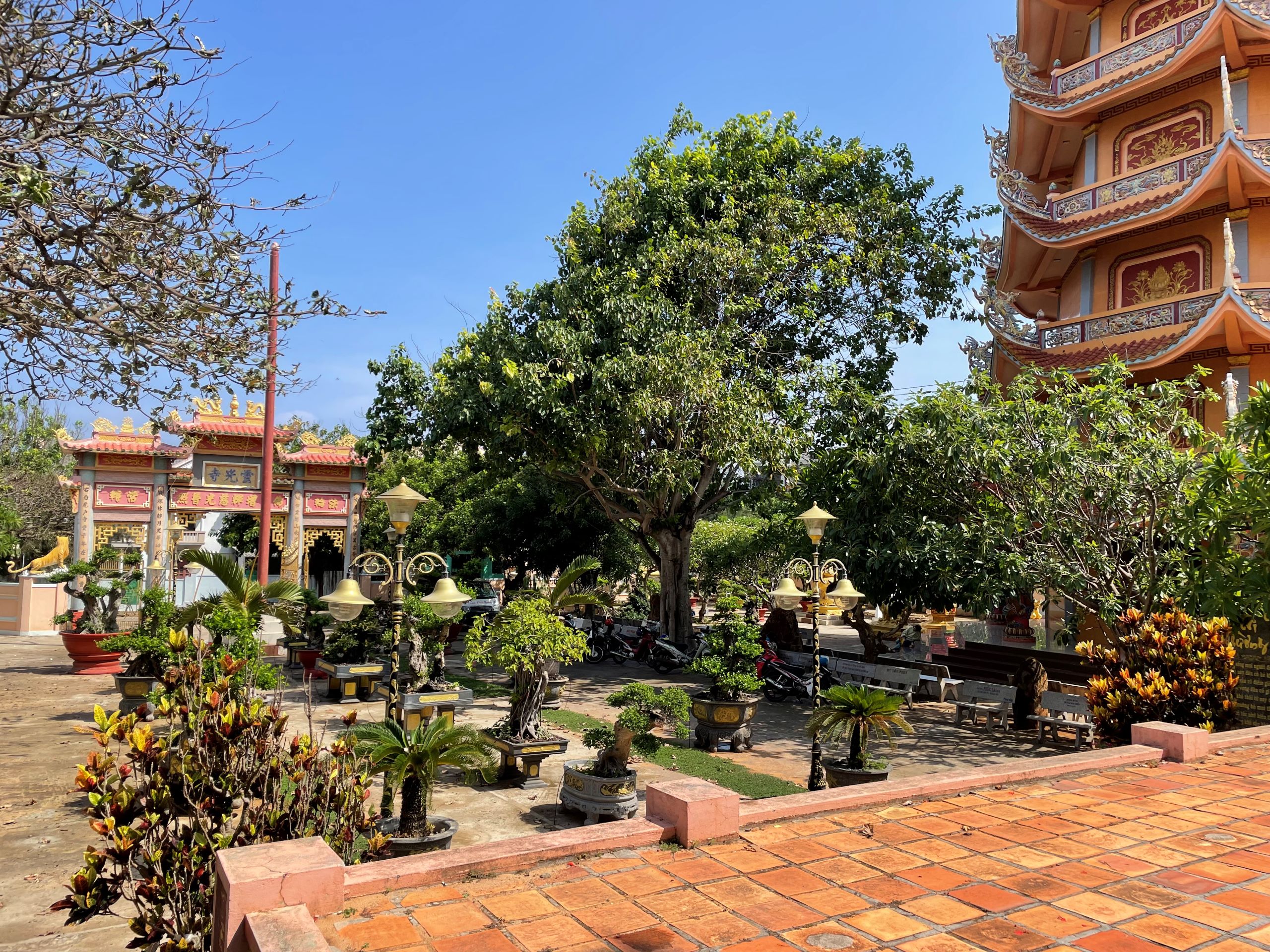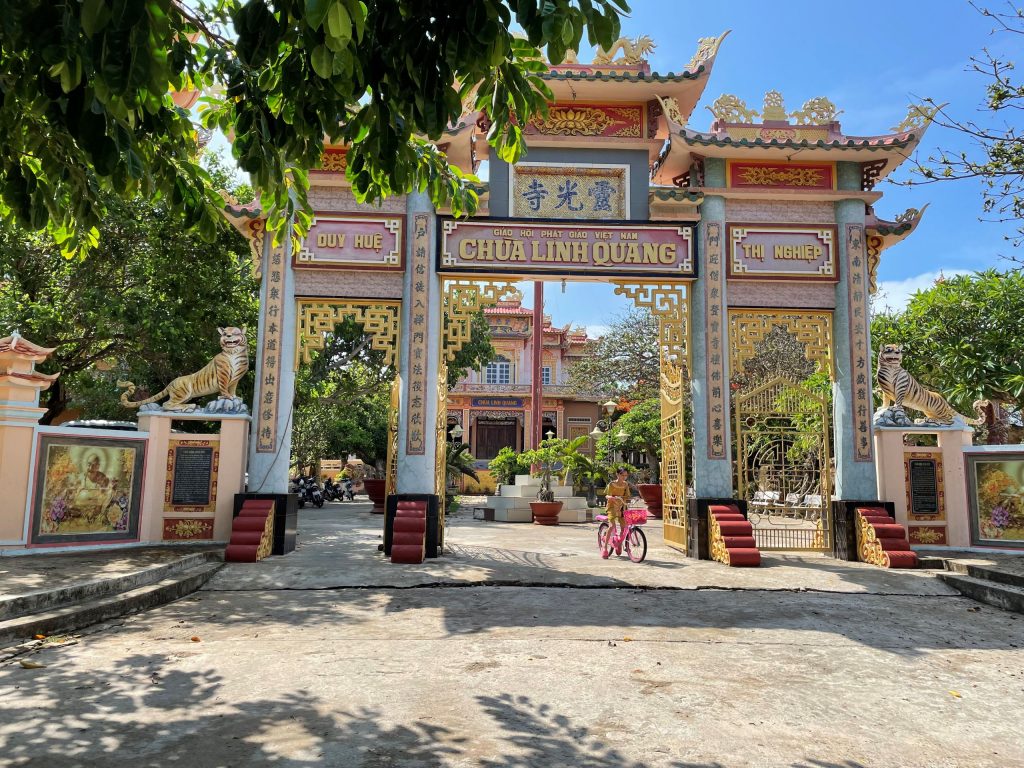Linh Quang Pagoda – The renowned ancient pagoda in terms of scale, architectural art, religion, and rituals, with diverse natural landscapes deserving to be a scenic spot of Phu Quy Island.
Since its establishment, the locals on the island have called the pagoda “Linh Quang Tu” in the hope that the radiance and light of the pagoda always shine brightly to save the people on the island and bring them a peaceful and happy life. Linh Quang Tu is the first pagoda closely associated with the spread of Buddhism in Phu Quy. It is not only a place with beautiful scenery, but Linh Quang Tu is also a representative pagoda in terms of history, literature, and art compared to other pagodas on the island.
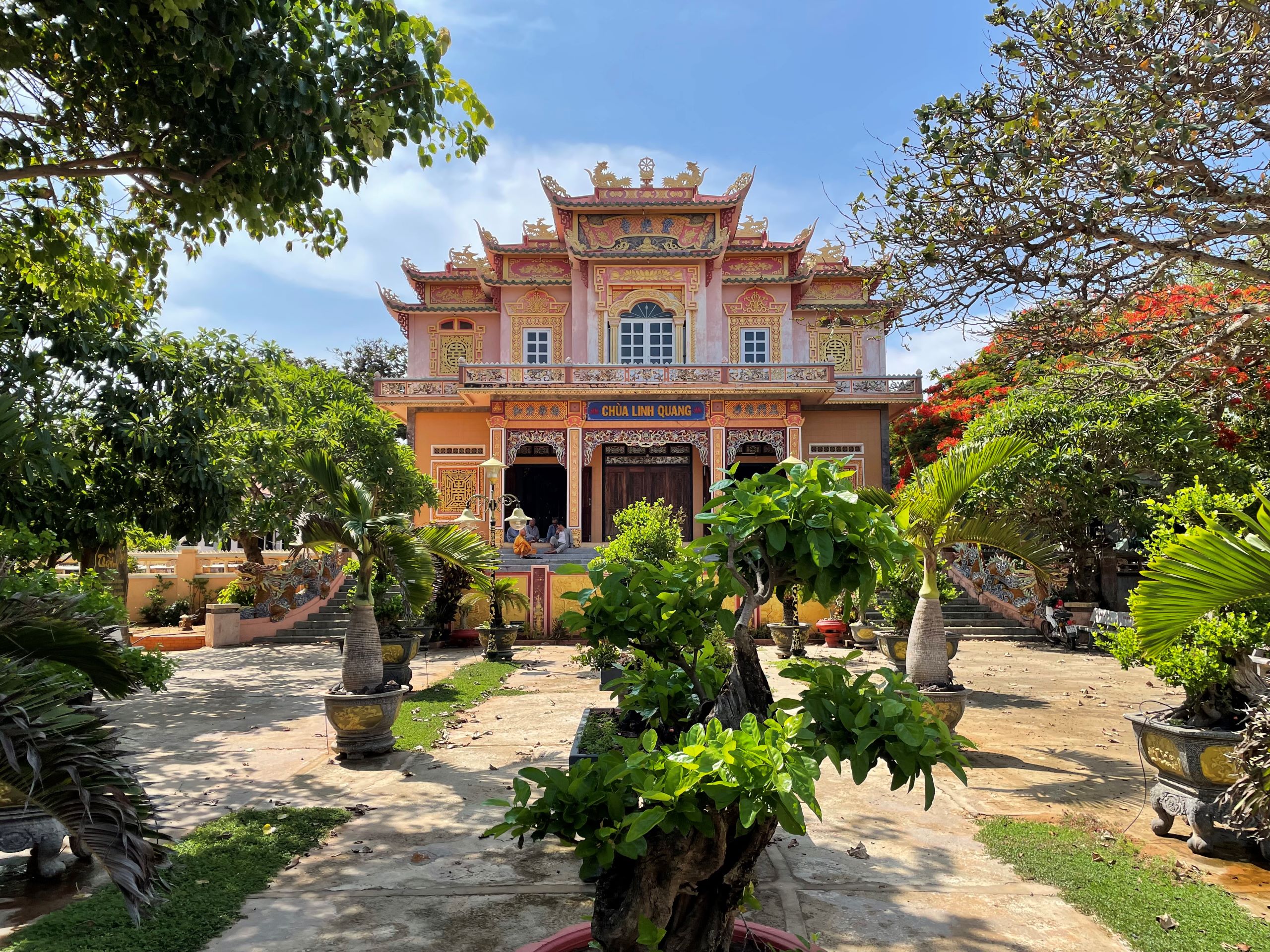
According to the official genealogy, the pagoda was built and renovated in the year of Dinh Mao, 1747, during the reign of King Le Hien Tong – the eighth year of Canh Hung reign. To this day, the pagoda has a history of nearly 300 years and is one of the earliest pagodas in Binh Thuan. With its notable values and significance, Linh Quang Pagoda was classified as a national scenic spot by the Ministry of Culture and Information in Decision No. 51 QD/BT on January 12, 1996.
History of Linh Quang Tu’s Formation
According to historical records and information from elderly individuals who have lived many generations on Phu Quy Island, in the early days, around Linh Quang Pagoda, there were forests and many natural rock formations. Therefore, the Zen master Nguyen Canh, the founder of the pagoda, saw this place as suitable for establishing a temple and worshiping the Buddha, so he built a small hermitage. The purpose of Zen master Nguyen Canh was to recite prayers for the safety of the fishermen at sea.
When Lord Nguyen Anh (later King Gia Long) was pursued by the Tay Son army, he fled to Phu Quy Island and sought refuge at Linh Quang Pagoda for a period of time.
After returning to the mainland and ascending the throne, to commemorate the days of seeking refuge on the island, and to preserve the memory of the king’s visit to Linh Quang Pagoda, King Gia Long composed a poem right in front of the pagoda’s terrace. The poem reads:
“Gia Long, in the years of national crisis,
Set foot on the famous island of Linh Quang.
Admiring the landscapes, touched by the sacred place,
Facing west, erecting a grand gate.”
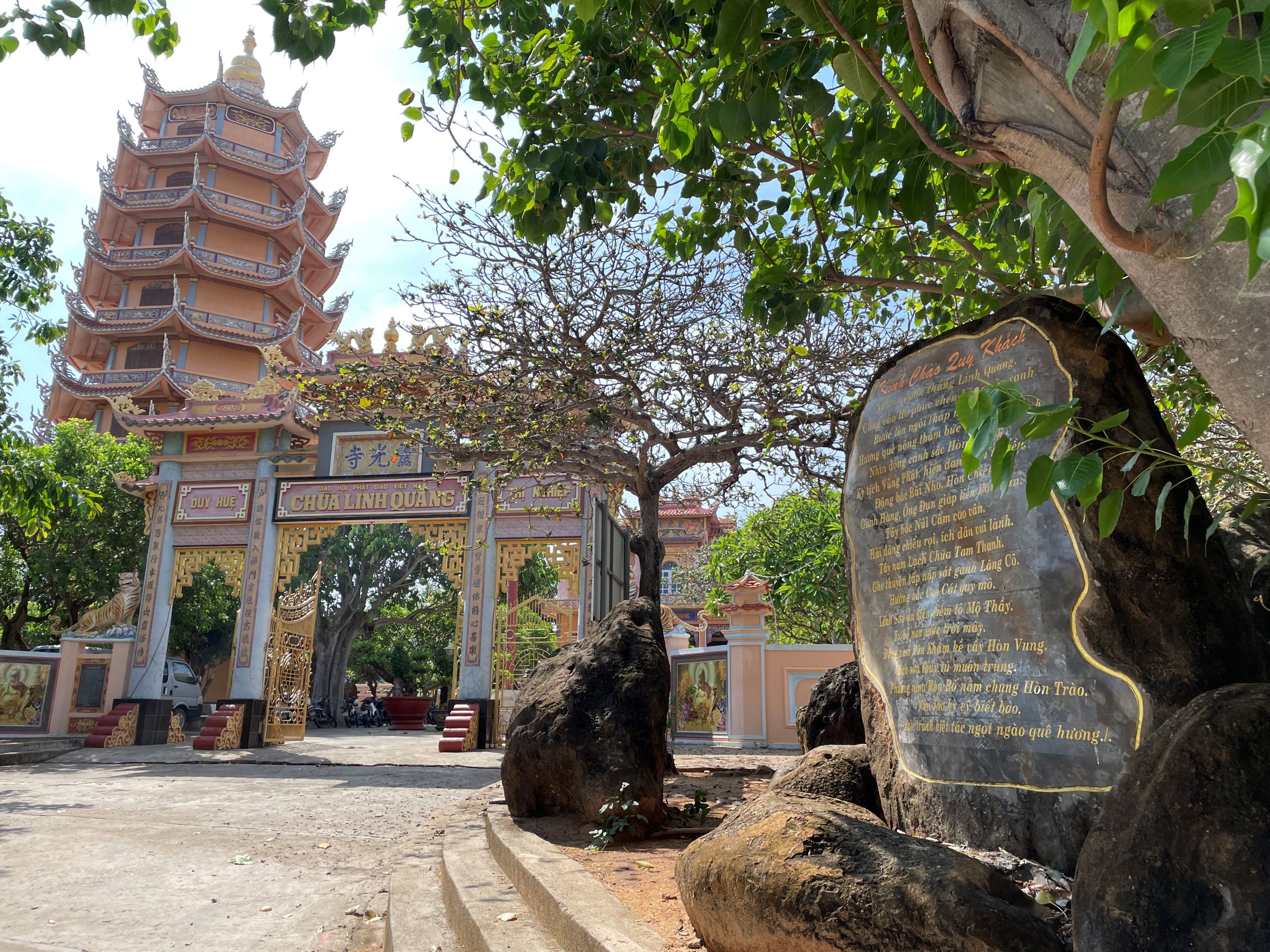
At the end of the 18th century, Linh Quang Pagoda was burnt down, and many ancient and valuable treasures of the pagoda were damaged. Afterward, a sacred stone emerged in the sea channel near Hon Tranh on Phu Quy Island. Considering it as an auspicious sign, the Buddhist followers on the island brought the sacred stone back to the pagoda. The stone was later carved by artisans into a statue of the Buddha Shakyamuni, measuring 121cm in height and weighing 300kg, which has been placed in the pagoda for Buddhist followers to worship from then until today.
Since then, the place where the sacred stone appeared has been named “Vung Phat.” The locals have passed down this legend to future generations, expressing their profound reverence for the Buddha.
In Linh Quang Pagoda, there is also the Great Hong Chung bronze statue, cast in 1795, and the Bat Nha drum with a diameter of 1m, made from a piece of starry wood.
Additionally, there are dozens of ancient inscriptions engraved on horizontal lacquered boards, couplets, and so on, with content related to Buddhist legends, praising the Buddha, and guiding people toward goodness.
Among the most carefully preserved treasures in Linh Quang Pagoda, mention must be made of the box containing the “Sac Menh Chi Bao” conferred by the Nguyen Dynasty (two conferred by King Tu Duc, one by King Dong Khanh, one by King Duy Tan, and one by King Khai Dinh). To this day, these five royal seals remain intact, and they are displayed for important ceremonies each year.
“The Highest Linh Quang Tower” on Phu Quy
The Giac Hoang Bao Tower is a nine-story octagonal tower, 27m tall (higher than the Phuoc Duyen Tower of Linh Mu Pagoda in Hue, which has two stories and is 6m tall). Each floor of the tower houses a Buddha statue, and the locals on the island often refer to it as the “Linh Quang Tower” because of its large size and its meticulous, exquisite, and artistic architecture.
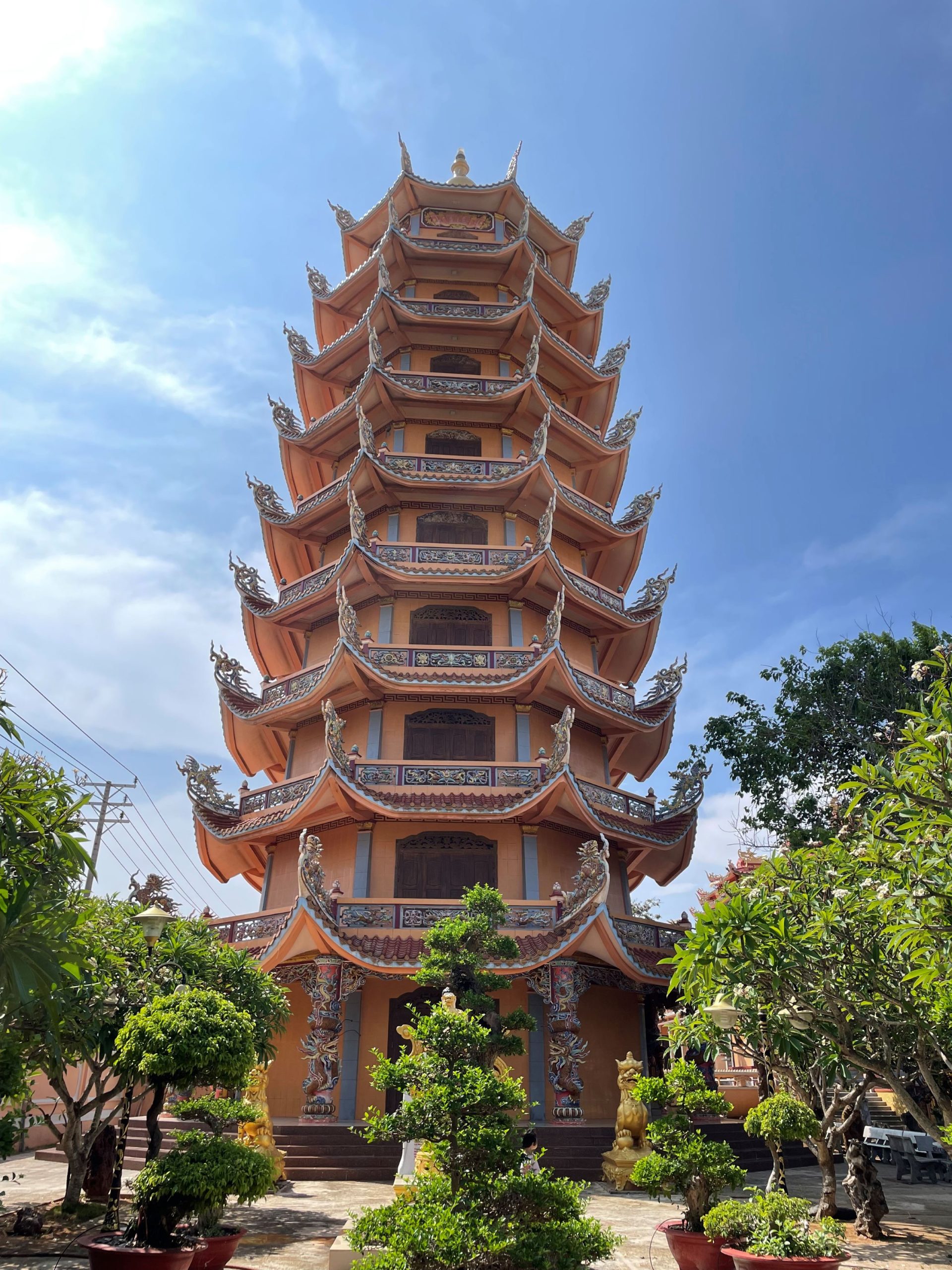
Located in the center of Phu Quy Island, it has attracted the attention and fascination of many tourists. On clear days with calm clouds and gentle breeze, if visitors stand on the highest floor of the “Linh Quang Tower,” they can clearly see the beautiful and poetic scenery of Hon Tranh, Hon Nho, Hon Chien, Hon Kham, Hon Vung, Hon Bo, Hon Trao, or witness the majestic Ca Cat Mountain and imposing Cam Mountain. Before entering to visit the “Linh Quang Tower,” visitors should not miss the heroic verses engraved on a large rock:
Remembering the famous Linh Quang landscape,
The entrance gate is adorned with lush trees.
Climbing the tower to admire the surroundings,
Homeland brims with a warm and friendly painting.
